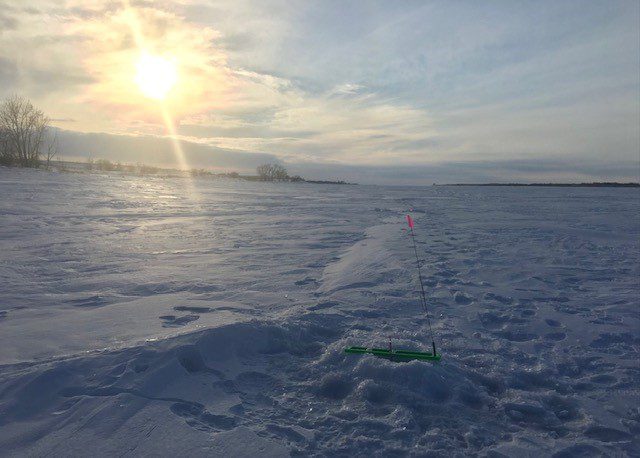

A person probably doesn’t want to think back through the past month of February and the number of days the thermometer dipped below the zero mark.
For that matter, there’s no need to mention the number of days it didn’t even get above zero for daytime highs.
Instead, let’s reminisce about those beautiful days last month, those warm days that melted snow and the occasional day when the wind wasn’t blowing higher than 20 miles an hour. Those days allowed folks to enjoy a day on the lake ice fishing. Plus, it was still possible to get out and cross-country ski or snowshoe in many areas.
With February behind us, North Dakota should be on the downward side of the winter of 2021-2022 - maybe.
Now it’s March, the ever-so-finicky month of March. It’s the month that spring officially arrives. It’s the month that North Dakotans can already think hunting and apply for their elk, moose, or even bighorn sheep license. It’s the month that new 2022 hunting, fishing, and trapping licenses become available from the North Dakota Game and Fish Department.
It’s a month that tends to offer up some wonderful late season ice-fishing opportunities. Pike are getting into their spawning mode and can be more active. And, perch, well, late season perch fishing can be amazing.
But March, being that ever-so-finicky month that it is can also be pretty nasty. From an ice-fishing perspective, late season ice can be especially dangerous, particularly on reservoirs like Lake Sakakawea that are drawn down in the winter. There’s the issue of slumping shoreline ice, for example.
And then there is the issue of water on the ice with the higher angle of the sun as longer days approach with the coming of spring. Granted, there could be more than a foot of good ice beneath the thin (and sometimes not-so-thin) layer of water but that can deteriorate in just a matter of a few days as ice begins to honeycomb and weaken.
Even though anglers have until March 15 to get their portable and permanent fish houses off the state’s lakes, now is the time to pay close attention to any house that isn’t pulled off a lake when an angler leaves for the day. Warmer days can create pools of water around the house and colder nights can freeze it back in. The mid-February warm spell followed by the cold and blustery spell prompted some Game and Fish Department game wardens to caution anglers to check their houses, making certain they could get them off without having too many problems as days moved towards March.
That was good advice then, and it’s even better advice now. Make sure everything is in place to move it off without having to do some last minute scrambling should March turn angelic and offer up an early spring thaw to pop crocuses and spring flowers into bloom.
Or there is the flip side, and March weather could bring some major snow events making it difficult to get onto and move around on lakes again, let alone get a house off the ice. March is typically when North Dakota begins experiencing an upswing in precipitation but the big question is whether it’s in the form of rain, snow, sleet, or ice. Granted, after coming off a major drought in 2021, an upswing in precipitation might not seem realistic.
But this is the Northern Great Plains, and weather extremes tend to be the norm rather than the exception.
As winter and winter ice fishing winds down, don’t give up on catching fish before the open water season begins. It’s just that it’s sometimes all too easy for longtime winter anglers and beginners alike to forget about safety, whether it’s getting on and off the ice or moving around on the ice. The same ice safety rules apply now as they did throughout the winter. Stay off gray or dark ice, it’s likely honeycombing and weakened. Don’t drive on a lake at night or drive through water – it might just be water on top of ice or it could open water.
Above all, remember it’s the finicky month of March - be prepared to deal with emergencies.